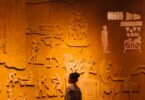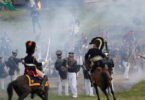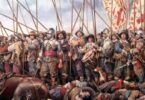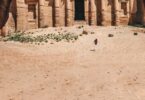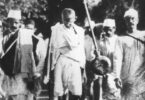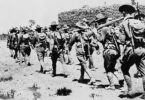Akbar Quiz:
Before coming to Akbar’s court, Miyan Tansen was in the service of
(a) Raja of Jodhpur
(b) Raja of Jaipur
(c) Raja Ramchandra
(d) Rani of Gondwana
Where is the Mausoleum of Emperor Akbar located?
(a) Agra
(b) Fatehpur Sikri
(c) Sikandra
(d) Jaipur
Akbar built the Buland Darwaza in the memory of:
(a) His Grand Father, Babur
(b) Khwaja Moinudeen Chisti
(c) Shaik Salim Chisti
(d) Victory of Gujarat
Related: the Indus Valley Civilization worksheet answers
Akbar’a son and successor, Salim, on becoming the emperor, assumed the name of
(a) Jahangir
(b) Jahangir Alampanah
(c) Jahangir Alamgir
(d) Nuruddin Muhammad Jahangir
Of the so-called ‘Nine Gems of the Court of Akbar’, the one who was a reputed poet of Hindi was
(a) Abul Fazl
(b) Abdur Rahim Khan-i-Khana
(c) Faizi
(d) Birbal
The Famous queen Chand Bibi, who fought against Akbar, defended the city of
(a) Kolkata
(b) Mysore
(c) Ahmednagar
(d) Delhi
Related: PSU in India
Which of the following buildings at Fatehpur Sikri is known as Ibadatkhana, where Akbar used to hold religious discussions?
(a) Diwan-i-Aam
(b) Jami Masjid
(c) Panch Mahal
(d) Diwan-i-Khas
Akbar founded the Din-i-Ilahi primarily to
(a) Ensure racial and communal harmony
(b) Found a religious institution
(c) Put an end to differences between Hindus and Muslims
(d) Establish a national religion which would be acceptable to the Muslims and the Hindus
Akbar married a bride from
(a) Bikaner
(b) Jaisalmer
(c) Jaipur
(d) Udaipur
Related: list of Indian Political parties
Akbar’s concept of Sulh-i-kul (or Qul) means
(a) friendship and goodwill to all
(b) fraternity and friendship
(c) harmony and peace to all
(d) common brotherhood
The only Hindu at the court of Akbar to accept the Din-illahi was
(a) Man Singh
(b) Todar Mal
(c) Birbal
(d) Bhagwan Das
To bring Hindu-Muslim unity, Akbar
(a) encouraged cow-killing
(b) prohibited cow-killing
(c) taxed cow-killing
(d) remained silent to cow-killing
Related: Government purchases and transfer Payments quiz
Akbar had constructed several forts, which did not include the one of
(a) Lahore
(b) Agra
(c) Allahabad
(d) Delhi Red Fort

